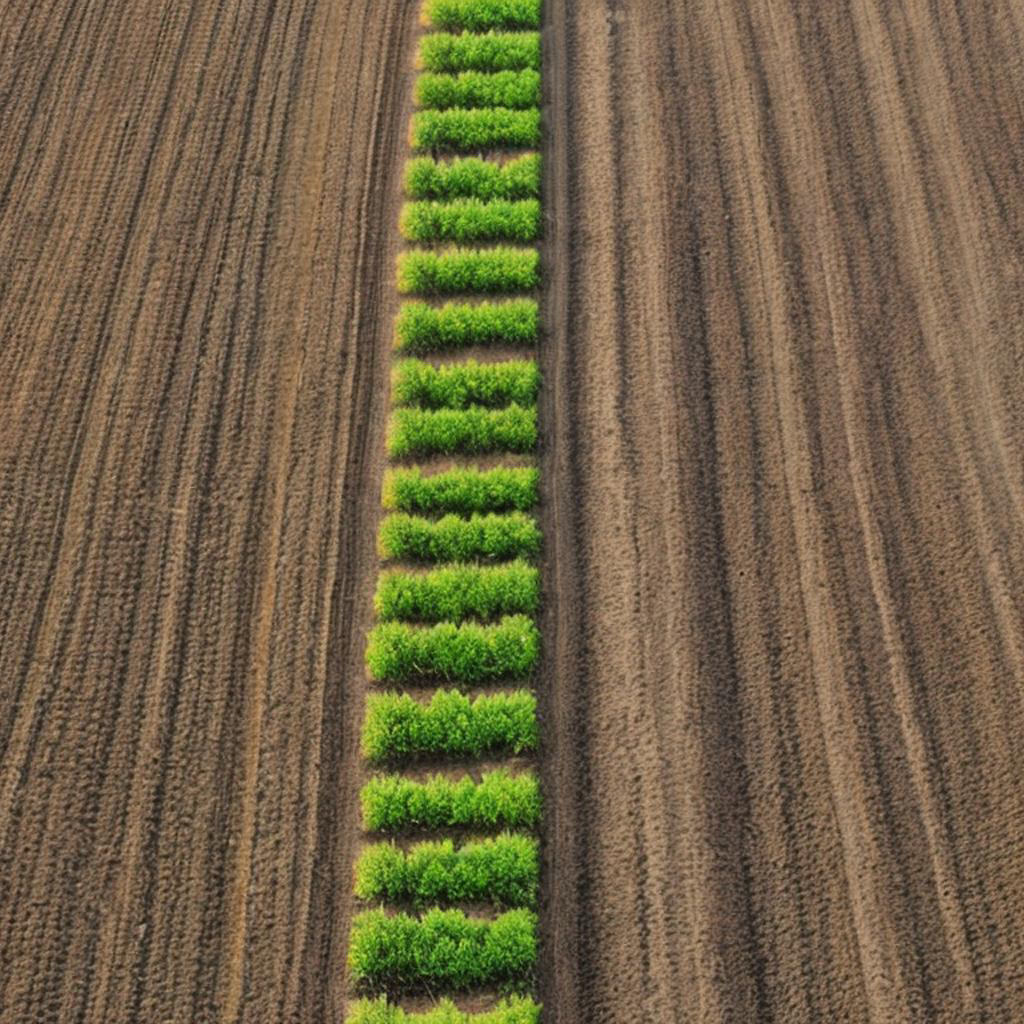
The Importance of Sustainable Soil Management
Healthy soil is the foundation of sustainable agriculture, and cover cropping and crop rotation are two essential practices for maintaining soil health. These practices help build soil organic matter, reduce erosion, and control pests and diseases, leading to healthier crops and a more sustainable food system.
What is Cover Cropping?
Cover cropping is the practice of planting a non-harvested crop in between growing seasons to help protect the soil, improve soil fertility, and control pests and diseases. Cover crops can be planted in the fall, after the main crop is harvested, or in the spring, before the main crop is planted.
Cover crops are typically planted to achieve one or more of the following goals:
Soil Protection
Cover crops help protect the soil from erosion by providing ground cover and reducing the impact of raindrops.
Soil Fertility
Cover crops can help improve soil fertility by adding organic matter and nutrients to the soil.
Pest and Disease Control
Cover crops can help control pests and diseases by providing a habitat for natural predators and reducing the habitat for pests and diseases.
Weed Suppression
Cover crops can help suppress weeds by competing with them for resources.
Examples of Cover Crops
Legumes
Legumes, such as clover, vetch, and beans, are commonly used as cover crops. Legumes fix nitrogen in the soil, which can improve soil fertility for the next crop.
Grasses
Grasses, such as rye, oats, and barley, are also commonly used as cover crops. Grasses provide ground cover and help reduce erosion, as well as adding organic matter to the soil.
Mixtures
Cover crop mixtures, which include a combination of legumes, grasses, and other species, can provide multiple benefits, such as improved soil fertility, pest and disease control, and weed suppression.
What is Crop Rotation?
Crop rotation is the practice of planting different crops in a sequence to help maintain soil health and reduce the risk of pests and diseases. Crop rotation can also help improve soil fertility, reduce erosion, and increase crop yields.
Crop rotation is typically planned based on the following considerations:
Crop Family
Different crops belong to different plant families and have different nutrient requirements. By rotating crops within the same family, soil nutrients can be managed more efficiently.
Pest and Disease Management
Different crops are susceptible to different pests and diseases. By rotating crops, the habitat for pests and diseases can be disrupted, reducing the risk of infestation.
Soil Health
Different crops have different root systems and impact the soil in different ways. By rotating crops, soil health can be maintained and improved.
Examples of Crop Rotation
Corn-Soybean Rotation
Corn and soybeans are commonly rotated in the Midwest United States. Corn is a heavy feeder and can deplete soil nutrients, while soybeans are nitrogen-fixing and can improve soil fertility.
Three-Year Rotation
A three-year rotation can include a small grain crop, such as wheat or barley, followed by a legume crop, such as peas or lentils, and then a fallow year. This rotation can help improve soil fertility, control pests and diseases, and reduce erosion.
Four-Year Rotation
A four-year rotation can include a small grain crop, followed by a legume crop, a brassica crop, such as broccoli or cabbage, and then a fallow year. This rotation can help improve soil health, control pests and diseases, and reduce erosion.
Cover cropping and crop rotation are essential practices for maintaining healthy soil and promoting sustainable agriculture. By using these practices, farmers can reduce the risk of erosion, reduce the need for harmful pesticides and fertilizers, improve soil fertility, and increase crop yields. There are many different cover crops and crop rotation sequences that can be used, depending on the specific needs of the farm and the region. However, the key is to plan and implement these practices with a long-term perspective, as they require patience and consistency to achieve their full benefits.
By adopting cover cropping and crop rotation practices, farmers can improve the sustainability of their farms, reduce the negative impact of farming on the environment, and improve the health of the soil and the crops. These practices are not only good for the land, but also for the farmers and the communities that rely on them for food and economic well-being.
How can people apply all that in their gardens, kitchen gardens, vegetable garden, herb garden and fruit garden
Cover cropping and crop rotation are not just practices for large-scale agriculture; they can also be adapted to home gardens, vegetable gardens, herb gardens, and fruit gardens. Here are some tips on how to apply these practices in your own garden:
Cover Cropping in Home Gardens
Choose a cover crop that is appropriate for your garden. For example, legumes can be used to add nitrogen to the soil, while grasses can help control erosion.
Plant the cover crop after the main growing season is over. This could be in the fall, after harvesting your summer crops, or in the spring, before planting your summer crops.
Allow the cover crop to grow until just before the next planting season. Then, cut it down and work it into the soil to add organic matter.
Crop Rotation in Home Gardens
Plan your crop rotation based on the needs of your garden. For example, rotate heavy-feeding crops, such as tomatoes, with nitrogen-fixing crops, such as peas.
Divide your garden into sections and rotate crops between them each year. For example, if you have four sections, you could plant tomatoes in one section, peas in the next, corn in the third, and squash in the fourth.
Plant cover crops in between crop rotations to help improve soil health and control pests and diseases.
Applying cover cropping and crop rotation practices in your home garden can help improve soil health, reduce the need for pesticides and fertilizers, and increase crop yields. It can also help promote a more sustainable and environmentally friendly approach to gardening.
Shop tip
Cover Cropping On Amazon
Video
The science of soil health
Thank you for reading, comments and shares! ?
Crafted with chatGPT Language Models and Picsart
Embark on the journey of creating your own website and mastering affiliate marketing within a vibrant online community. Start for free as a beginner and discover if this path suits you. Invest in your future and learn at your own pace, surrounded by supportive peers.







